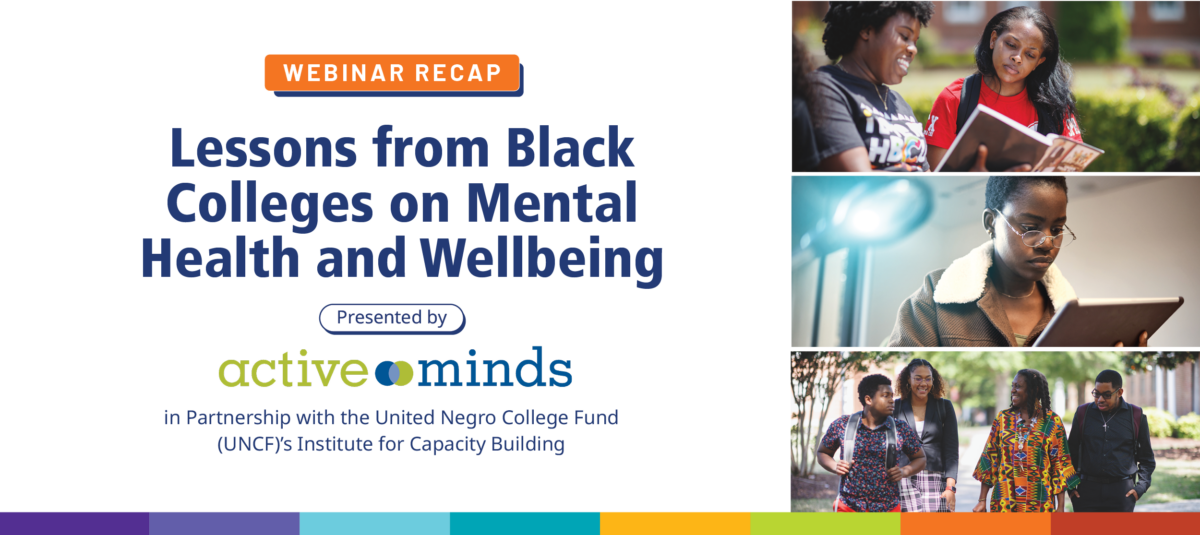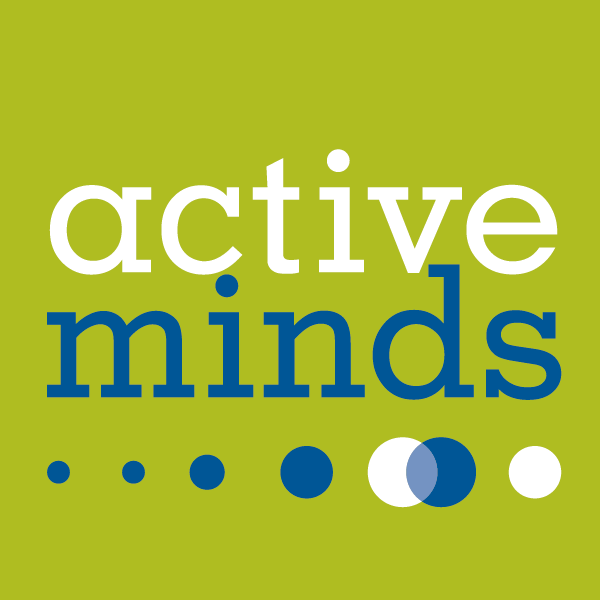“You can’t afford to not pay attention to what’s going on with student mental health.” That sentiment has inspired Active Minds’ work for nearly two decades, including the recent release of our report “Lessons from Black Colleges on Mental Health and Wellbeing.” Created by Active Minds and the United Negro College Fund (UNCF), this report provides practical strategies that HBCUs can utilize to better address their campus’s student needs and create an equitable mental health culture for all. This week, Active Minds joined four panelists from various Historically Black Colleges and Universities (HBCUs) to discuss strategies for encouraging student wellbeing, informed by the findings of the report.
Our special guests, who were instrumental in the creation of the report, included Dr. Gail Mattox from the Morehouse School of Medicine, Shanice White from Jackson State University, Christopher Thomas from Coppin State University, and Dr. Stacia Alexander from Paul Quinn College, and UNCF’s Victoria Smith moderated the conversation. These experts were able to share incredible insights on everything from how to promote mental health resources and tools, to how to empower students, to how to ensure that mental health initiatives remain sustainable.
Implementing the strategies promoted in the report and discussed in the webinar will help students receive tailored support, and give institutions the ability to better care for diverse student populations who are often not well served in higher education — a major step towards equity in the field of higher education.
If you weren’t able to attend the webinar, you are invited to watch the recording here. Additionally, check out our top takeaways from the discussion, and make plans to continue this conversation with your colleagues and administrations:
- Creating a culture that values mental health needs to happen from the top down, from start to finish.
One of the common themes shared by our panelists is that creating a sustainable mental health culture requires investment from leadership and that support must trickle all the way down through administration, staff, and to students. One recommendation included creating mental health goals as part of your university’s strategic plan, and achieving buy-in from leadership at the initial planning stages to ensure that your work will be able to continue for years to come. Additionally, there was a consensus in recommending that mental health programming for students begin as soon as they arrive on campus, not just when a crisis occurs. This can look like including a session on mental health resources and care during student orientation, a time when the attention of the full student body will be captured. - Mental health education and awareness are part of a larger holistic approach and need to be treated as such.
As you begin to plan programming that centers student well-being, another agreed-upon recommendation from our panel included finding ways to ensure that mental health care on campus remains accessible, such as including access to counseling and other mental health treatment in the student health center. By taking a holistic approach, and not separating how students receive care for their physical and mental health, you’re helping to remove the stigma around seeking help. Some students may not feel comfortable going to a building specifically designated for counseling, so allowing them to go somewhere familiar, the same place they might go if they had a cold for example, creates more of a sense of familiarity rather than fear. - Students are incredible (and necessary) partners in creating, promoting, and reviewing resources and programming.
All of the recommendations and tips listed above can easily be rendered unsuccessful if you are not including young adults in the process of creating mental health resources from start to finish. Students know what they need, and by giving them the space and platform to tell you what they and their peers are looking for, you can help to better ensure that the programming you create is relevant, accessible, and inclusive. If you don’t know where to start, see if your school has an Active Minds chapter. We also encourage you to reach out to clubs on campus that support BIPOC and LGBTQ+ students as you work to center equity in the mental health culture you build.
Thank you again to our panelists for sharing their expertise and continuing to promote spaces of inclusion. If you’d like to learn more about how to utilize these new strategies to foster an equitable mental health culture on your campus, please read the full report, “Lessons from Black Colleges on Mental Health and Wellbeing” here.




